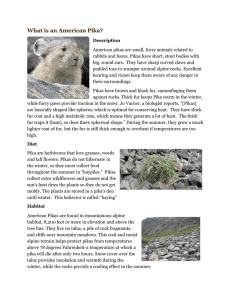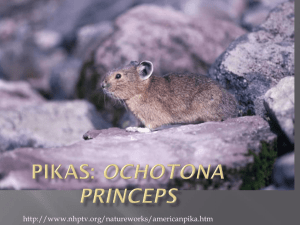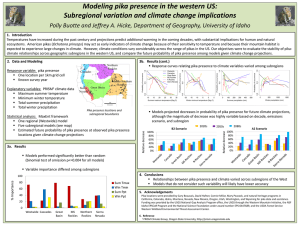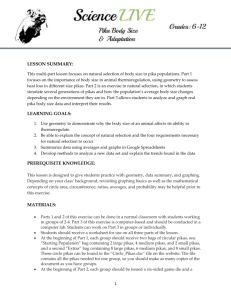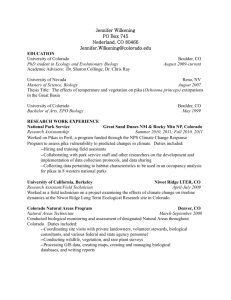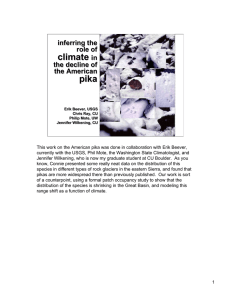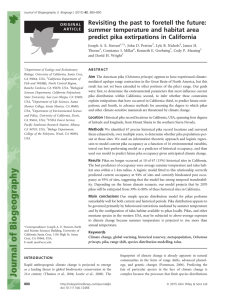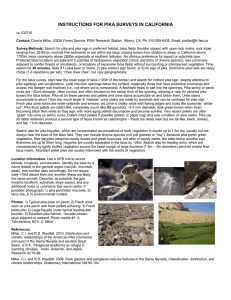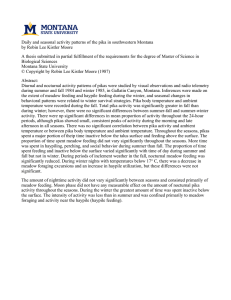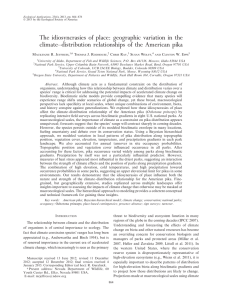a close-up view of the photos.
advertisement
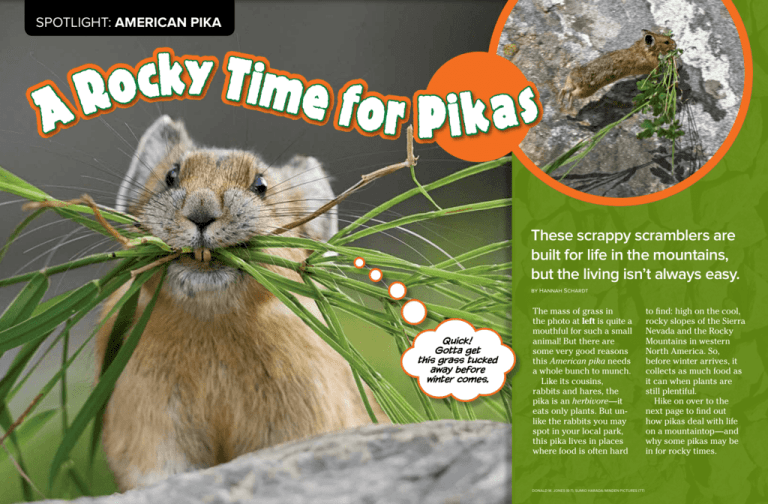
Spotlight: american pika y k T c i m o e R f s o a r A Pik These scrappy scramblers are built for life in the mountains, but the living isn’t always easy. by Hannah Schardt Quick! Gotta get this grass tucked away before winter comes. The mass of grass in the photo at left is quite a mouthful for such a small animal! But there are some very good reasons this American pika needs a whole bunch to munch. Like its cousins, rabbits and hares, the pika is an herbivore—it eats only plants. But unlike the rabbits you may spot in your local park, this pika lives in places where food is often hard DONALD M. JONES (6-7); SUMIO HARADA/MINDEN PICTURES (7T) to find: high on the cool, rocky slopes of the Sierra Nevada and the Rocky Mountains in western North America. So, before winter arrives, it collects as much food as it can when plants are still plentiful. Hike on over to the next page to find out how pikas deal with life on a mountaintop—and why some pikas may be in for rocky times. Mini-Mountaineers Pikas are made for life in the mountains. The so-called “rock rabbits” nimbly leap and scramble over piles of rock—and rest and raise their babies in spaces between them. They eat the wildflowers and grasses that grow high on the DONALD M. JONES/MINDEN PICTURES (8T); THOMAS KITCHIN & VICTORIA HURST/LEESONPHOTO (8-9) Mmm... delicious daisy! Pikas spend late spring, summer, and early fall building a hay pile that will feed them all winter. slopes. And they are happy in the cool mountain air. Even the snowy winters don’t bother them. Pikas don’t snooze away the winter in hibernation. They move around their territories in tunnels dug under the snow. Brrr . . . sounds cold! But a thick blanket of snow acts as insulation—it protects the furry travelers from the frigid winter air. Oh, Hay! Because they don’t hibernate, pikas have to eat all year long. That’s where those huge mouthfuls of grass come in. During late spring, summer, and early fall, a pika spends most of its time building a hay pile. That’s a mound of grasses and wildflowers it can nibble on during the winter. Once the hay pile is nice and dry from the sun, the pika moves it into a den deep inside the rocks. One pika’s pile may weigh as much as 60 pounds! That’s quite a pantry for an animal that weighs only as much as a baseball. No time to admire the view—I’ve got to make hay! CANADA UNITED STATES where American pikas live In some places, pikas are moving higher up the mountains to escape the heat from a warming planet. In others, they’ve disappeared completely. Eek! Get out of here, you sneaky weasel! I’m a long-tailed weasel, and I’m on the lookout for a snack! Watch Out! When you’re a little pika on a big mountain, life can be dangerous. Especially when there’s a long-tailed weasel around! Many animals eat pikas, including eagles, coyotes, and foxes. But the weasel is the American pika’s main predator, and it prefers to snatch helpless baby pikas. Once a pika mom gives birth to her babies, she still must spend most of the day out looking for food. If she spots a weasel or other threat to her babies from afar, she lets out a sharp squeak. That warns her babies that there’s danger nearby—and tells the predator it’s been spotted. Warming Up Weasels and other predators used to be the biggest threat to American pikas. But now pikas face something that’s even more dangerous: climate change. Burning oil, coal, and other fuels releases gases into the ­atmosphere that make the planet warmer. The mountains where American pikas make their homes are also heating up. When pikas get too warm, they overheat and may even die. So the coldloving critters must spend more time each day hiding out in the shade of their rocky dens—and less time out gathering hay. That means that some pikas may not be able to build up the hay piles they need to get them through the winter. Scientists are keeping a close eye on pikas. They’ve found that, in some places, the animals are moving higher up the mountains to escape the heat. In other places, they’ve disappeared completely because there’s nowhere higher to go. Those scientists are trying to figure out why some American pika populations are able to handle warmer temperatures better than others. They hope that what they learn could help protect the pikas that are left. After all, no other animal is quite like a pika! = THOMAS KITCHIN & VICTORIA HURST/LEESONPHOTO (10TL); TOM & PAT LEESON (10-11T, 11B) People want to help me? I’m all ears.


